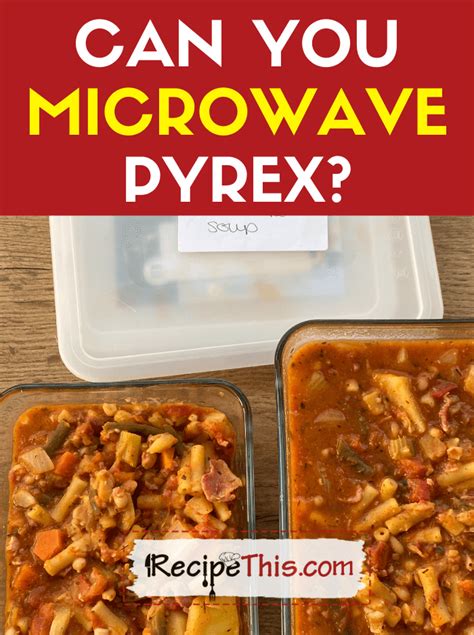What is Pyrex?

Pyrex is a brand name for a type of borosilicate glass that is known for its durability and resistance to thermal shock. It is often used to make cookware, baking dishes, and other kitchenware.
Microwave Safety
The microwave safety of Pyrex depends on the specific product being used. Some Pyrex products are specifically designed for microwave use, while others are not. It is important to check the manufacturer’s instructions before using any Pyrex product in the microwave.
Products Labeled for Microwave Use
Pyrex products that are labeled for microwave use are typically made of a type of borosilicate glass that is specifically designed to withstand the high temperatures and rapid heating of a microwave oven. These products are safe to use in the microwave for reheating, cooking, and defrosting food.
Products Not Labeled for Microwave Use
Pyrex products that are not labeled for microwave use may not be made of the same type of borosilicate glass that is used in microwave-safe products. These products may not be able to withstand the high temperatures and rapid heating of a microwave oven, which could cause them to break or shatter.
Warning Signs
There are a few warning signs that can indicate that a Pyrex product is not microwave-safe:
- Cracks or chips: Any cracks or chips in a Pyrex product can weaken the glass and make it more likely to break in the microwave.
- Uneven heating: If a Pyrex product heats unevenly in the microwave, it may be a sign that it is not microwave-safe.
- Sparks or arcing: If a Pyrex product sparks or arcs in the microwave, it is definitely not microwave-safe and should be discarded immediately.
Safety Tips
Here are some safety tips to follow when using Pyrex products in the microwave:
- Always check the manufacturer’s instructions: Before using any Pyrex product in the microwave, check the manufacturer’s instructions to make sure that it is microwave-safe.
- Do not overheat: Do not overheat Pyrex products in the microwave. This can cause the glass to weaken and break.
- Use a lower power setting: If possible, use a lower power setting when microwaving Pyrex products. This will help to prevent overheating.
- Do not use cracked or chipped products: Do not use Pyrex products that have any cracks or chips. These products are more likely to break in the microwave.
- Handle with care: Always handle Pyrex products with care, especially when they are hot.
Alternatives to Pyrex
If you are not sure whether or not a Pyrex product is microwave-safe, there are a number of other microwave-safe materials that you can use instead. These include:
- Ceramic: Ceramic is a good alternative to Pyrex for microwave use. It is durable, heat-resistant, and microwave-safe.
- Plastic: Some types of plastic are microwave-safe. Look for products that are labeled “microwave-safe” or “microwavable.”
- Glass: Some types of glass are microwave-safe. Look for products that are labeled “tempered glass” or “microwave-safe.”
Motivations to Use Microwave-Safe Cookware
There are a number of motivations to use microwave-safe cookware, including:
- Convenience: Microwave-safe cookware makes it easy to reheat, cook, and defrost food in the microwave.
- Time-saving: Microwaving food is much faster than cooking it on the stovetop or in the oven.
- Energy-saving: Microwaves use less energy than other cooking methods.
- Space-saving: Microwave-safe cookware is often more compact than traditional cookware, which can save space in your kitchen.
- Safety: Microwave-safe cookware is designed to withstand the high temperatures and rapid heating of a microwave oven, which makes it less likely to break or shatter.
